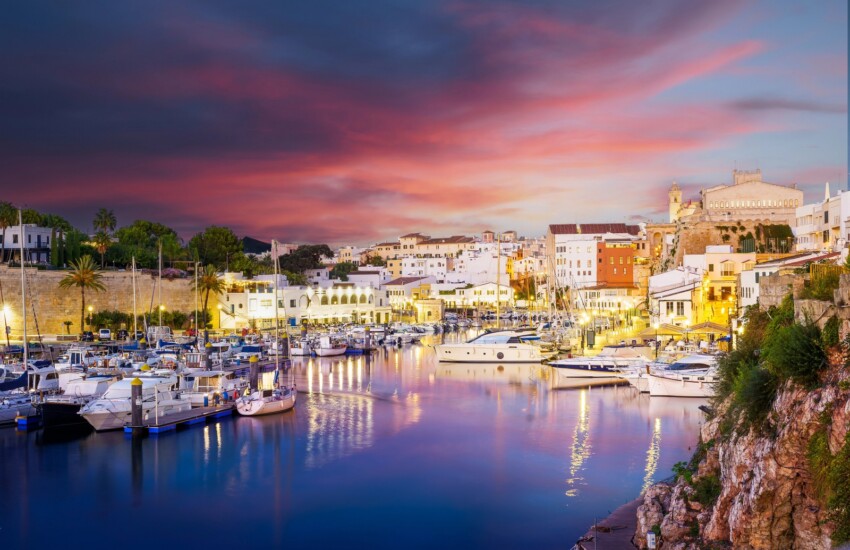

Ciutadella de Menorca is the second most important city on the island of Menorca after Mahon and has preserved important evidence of the different dominations that have taken place here. In fact, the city is located along the west coast of the island and is the custodian of a unique archaeological heritage.
Inhabited since the Bronze Age, Ciutadella, after being founded by the Carthaginians, dominated by the Romans and occupied by the Moors, was conquered in the 13th century by the Spanish forces of Alfonso III and thus became part of the Crown of Aragon. Having become an important business centre and an active commercial port, Ciutadella was invaded in the 16th century by the Turks who, after besieging the city for days, enslaved its entire population.
Returning to the Spanish crown, Ciutadella continued to be the island’s capital until the British, who ruled these territories in the 18th century, decided to transfer the centre of Menorca to Mahón. Despite its troubled history and various dominations, Ciutadella has remained a charming town. Its historical centre is characterised by a network of narrow streets and alleyways surrounded by palaces, churches and shops. In addition to sites of great historical interest, the city is also home to beautiful beaches that are perfect for days of relaxation.
Ciutadella is a town that should definitely be discovered on foot, walking through its streets and squares. The heart of the city is Plaça Es Born, the old parade ground of medieval origins, which holds an obelisk in its centre in memory of the victims of the Turkish invasion in 1558. This square is also home to the Town Hall, which was built in the 13th century on the site of the old Arab alcázar.
From the old town you can reach the town’s port, which in summer is a lively place where it is nice to stroll from sunset onwards. Ciutadella is also characterised by a good number of accommodation establishments, excellent restaurants and places to spend evenings with friends.
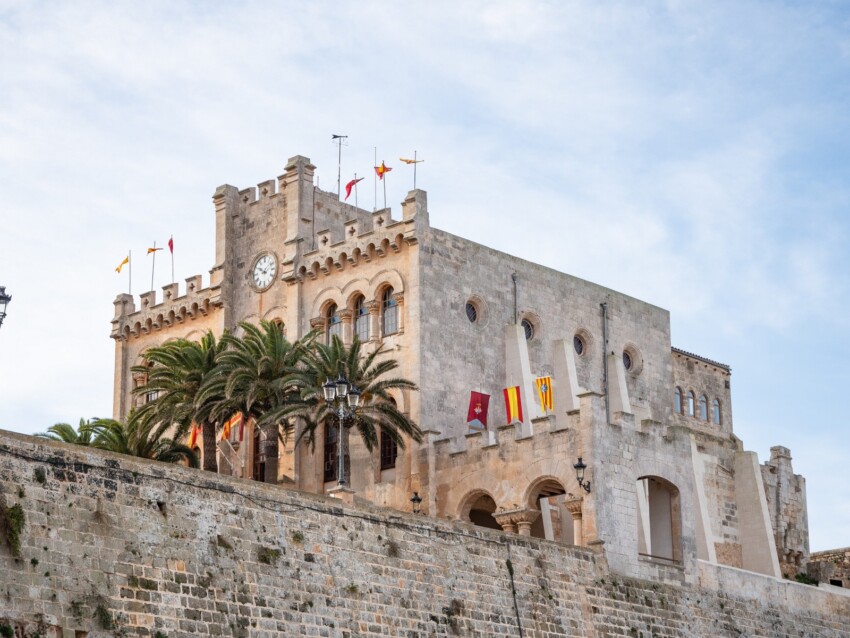
The Ciutadella Town Hall is one of the testimonies to the different civilisations that have characterised the city. The building we can now admire is the result of a reconstruction that took place in the 19th century, but it has preserved several parts of the original construction.
The building was originally built as an alcázar, or Arab governor’s palace, but was later transformed first into the Royal Palace and then into the Governor’s Palace. It was the seat of the Governor until 1722 when the British moved the capital to Mahon.
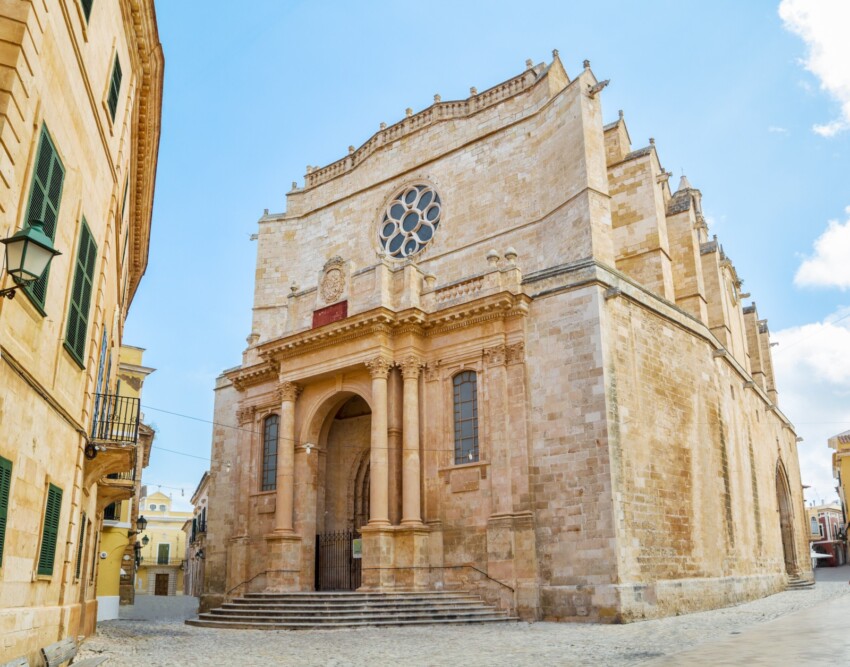
The Cathedral of Ciutadella was built in the 14th century on the site of a former mosque. Commissioned by King Alfonso III, the Cathedral retained the minaret of the original building, which was later converted into a bell tower. The religious building is in Catalan Gothic style although, having been destroyed and rebuilt several times over the centuries, it also boasts Baroque elements and neoclassical features. Inside, it has a single nave with six chapels, among which the Chapel of the Souls in Baroque style dating back to the 18th century and the Chapel of the Blessed Sacrament built in the 19th century in Neoclassical style stand out.
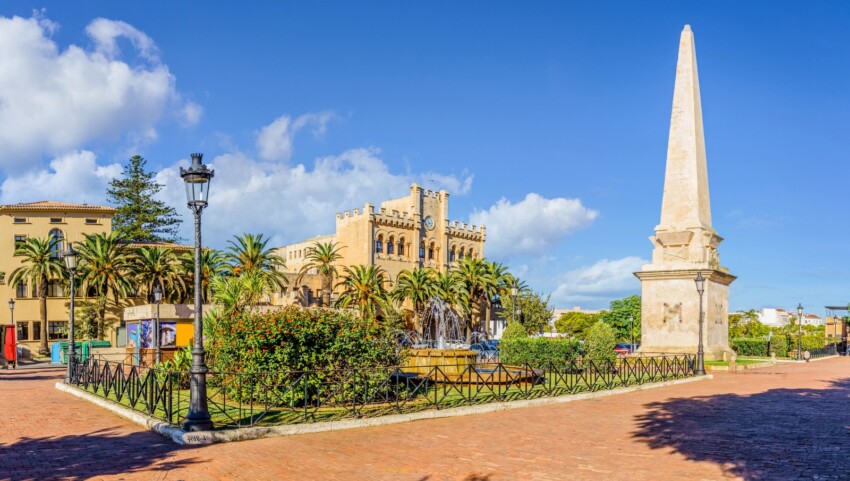
Plaça des Born is the beating heart of Ciutadella and one of the most elegant squares in the Balearic Islands. This urban space, with its elegant oval shape, is surrounded by fine historical buildings, including the Town Hall and several aristocratic palaces. In the centre of the square stands the obelisk commemorating the city’s defence during the Turkish attack in 1558.
The square is the venue for the city’s main events, particularly during the Sant Joan festivities, when it becomes the centre of celebrations. It is also the ideal starting point for exploring the old town, with its outdoor cafés offering the perfect opportunity for a rejuvenating break.
The Salort Palace is one of the most impressive examples of civil architecture in Ciutadella. This 18th century Baroque building has a majestic façade with a monumental portal surmounted by the family coat of arms. The interior, when accessible to the public, reveals sumptuous halls decorated with frescoes and period furniture.
The palace is particularly known for its interior patio, a typical example of Minorcan aristocratic architecture, with a monumental staircase and galleries on several levels. During the Sant Joan festivities, the palace plays an important role in the traditional celebrations.
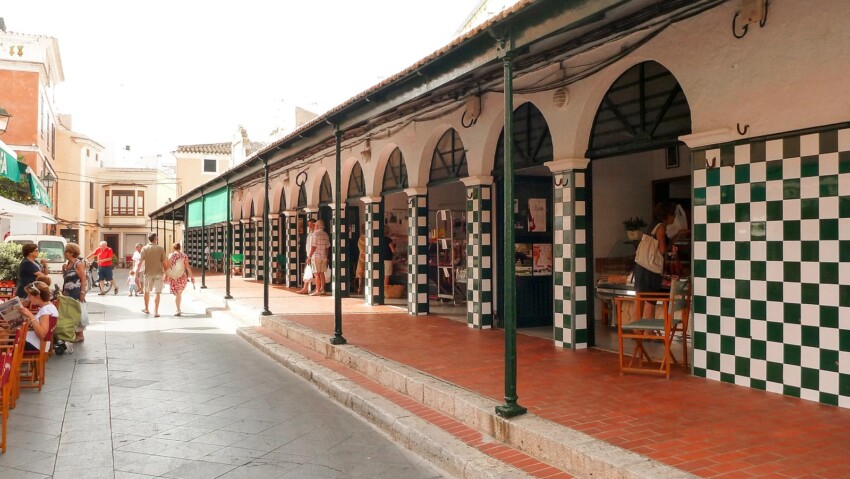
The Fish Market, located in a 20th century modernist building, is much more than just a market: it is a city institution where you can breathe in the authentic local atmosphere. Every morning, fishermen bring in their fresh catch to be sold to local residents and restaurateurs.
The market is also surrounded by bars and small restaurants where one can enjoy fish tapas and traditional dishes. A visit is especially recommended in the early morning hours, when activity is at its peak and you can witness the lively haggling ritual.
The Church of the Roser is a jewel of Minorcan Baroque architecture. Built in the 17th century, it stands out for its sober but elegant façade and richly decorated interior. The church houses a venerated image of the Virgin of the Rosary and is an important centre of popular devotion.
The complex also includes an old Dominican convent with a charming cloister, now used for cultural events and temporary exhibitions. The church is located in one of the most characteristic areas of the old town, surrounded by aristocratic palaces and workshops.
The Municipal Museum is located at the Bastion of Sa Font, a building constructed in 1677 as part of the city’s defence system. Located on a cliff near the harbour, inside you can admire a collection of objects ranging from the Talayotic civilisation through the Roman and Muslim periods to the Spanish reconquest. The route allows visitors to learn and explore not only the history of the city but of the entire island of Menorca.
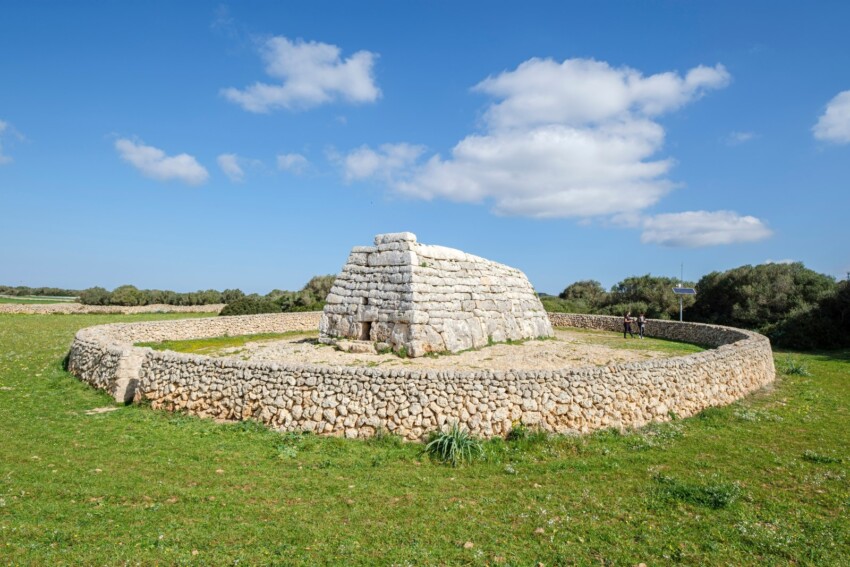
The Naveta Des Tudons is the most famous prehistoric monument in Menorca and, according to some, the oldest building in Europe. Located about 3 km from the city centre, the Naveta is a construction about 4.5 metres high and 14.5 metres long. The Naveta is a collective burial place dating back to pre-Talayotic times and its name derives from the fact that from the outside the building looks like an upturned ship.
The tomb is shaped like a horseshoe and was built with large square bricks. Inside there is an ossuary and a room for grave goods. During excavations carried out in the 1970s, numerous human bones as well as ceramic and bronze objects that were part of the grave goods donated to the deceased were found inside this burial site.
In the following map you can see the location of the main places of interest mentioned in this article.
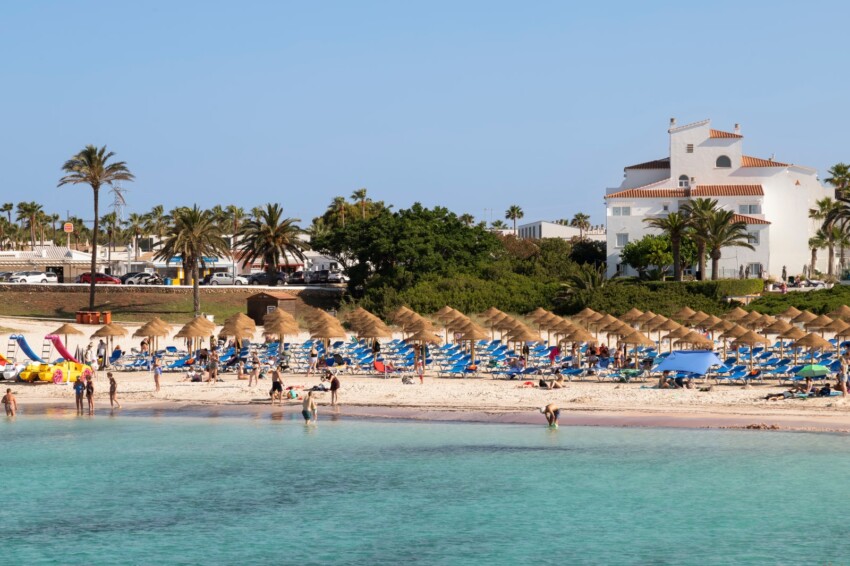
Ciutadella is located along a coastline that is home to some of the most beautiful beaches on the island. Between long, equipped beaches and small, wild coves, it is easy to find the beach in Ciutadella that best suits your needs.
Among the most famous is Cala en Bosc (or Cala’n Bosch), which is considered the town beach. Equipped with all amenities, this beach boasts fine, soft sand and a slowly sloping sea bed. Due to its characteristics, Cala en Bosc is popular with families with children but also with locals who want to enjoy a few hours of relaxation on the beach.
In addition to this, you can also consider Cala Santandria, a beach of fine white sand that is nestled between high cliffs and bathed by crystal-clear sea. Those who like wilder beaches, on the other hand, can go to Son Saura, a shoreline surrounded by a thick pine forest that is difficult to access and therefore not very popular. The beach at Son Saura is free and there are no services.
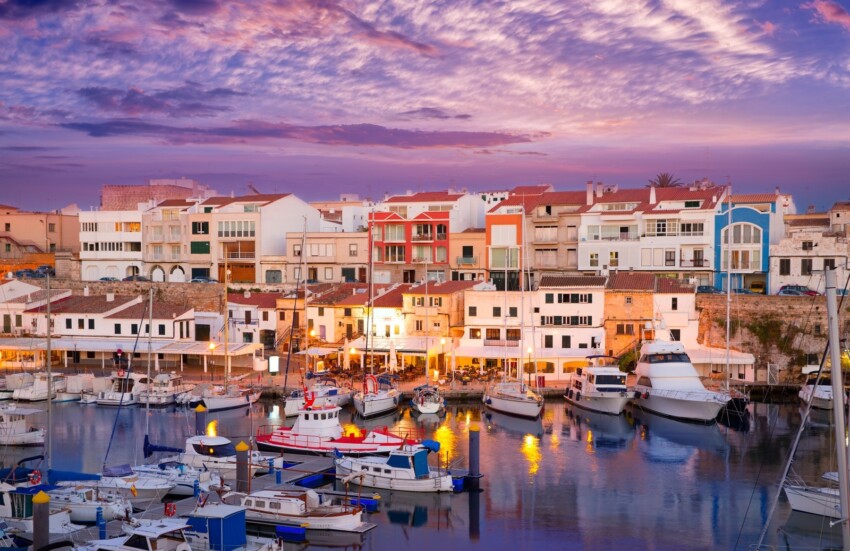
Ciutadella is a welcoming and hospitable town that boasts a large number of establishments of different types and price ranges. From beachfront resorts to hotels in the historic centre, every visitor can find the most suitable solution.
The historical centre of Ciutadella is the ideal area to stay and immerse yourself in the authentic atmosphere of the city. Here you will find boutique hotels housed in old noble palaces and charming B&Bs that offer a unique experience. The central location makes it easy to walk to all major points of interest and to enjoy the lively evening life.
The harbour area is another excellent choice for overnight stays. Hotels in this area often offer spectacular sea views and easy access to seafood restaurants and trendy clubs. It is particularly popular with those who wish to combine a cultural visit to the city with relaxing moments overlooking the sea.
The area of Cala’n Blanes, a few minutes from the centre, is perfect for families. This residential area offers resorts and flats with swimming pools, as well as easy access to the beaches and all the necessary services for a comfortable stay with children.
We offer a selection of hotels at Ciutadella to suit all categories of travellers. The most booked by tourists are the sea-facing hotels, often right on the beach. If you want to play it safe, choose one of the following: they are among the most booked hotels in Ciutadella, sorted by number of reviews.
If you prefer space, privacy and the ability to prepare your own meals to a hotel holiday, book a holiday home at Ciutadella. We recommend a few below, but in this case we advise you to book early because houses and apartments for rent at Ciutadella are in high demand.
Ciutadella is located approximately 50 km from Menorca Airport and is easily accessible by car from there. From the island’s airport, in fact, you can take the Me-1 road that leads to Ciutadella in less than an hour.
Those who want to travel by public transport, on the other hand, should go to the Mahon bus station and then take the TMSA company’s line 01 to Ciutadella.
What's the weather at Ciutadella? Below are the temperatures and the weather forecast at Ciutadella for the next few days.
Ciutadella is a resort on the west coast of the island of Menorca. The town is 50 km from Mahon and 20 km from Ferreries.